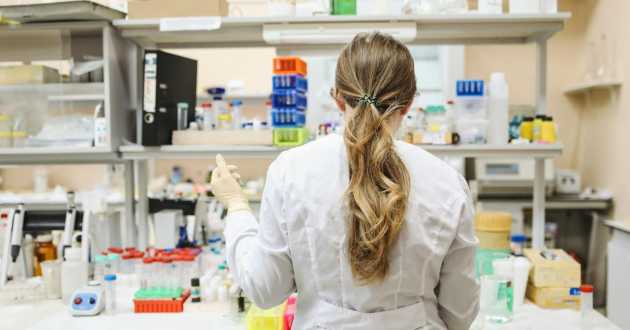From Concept To Cure: Understanding The Role Of Pharmaceutical Facilities
- - Category: Industrial
- - 19 Apr, 2024
- - Views: 63
- Save
This article talks about the role pharmaceutical facilities play in the creation process of medications and other drugs.
The path from a groundbreaking concept to a fully realized cure is intricate and multifaceted, with pharmaceutical facilities playing a pivotal role in this transformative process. These facilities are not merely buildings where medications are manufactured; they are innovative environments where science, technology, and safety converge to turn theoretical research into tangible treatments. This critical phase in drug development requires a seamless blend of research, testing, and production, all conducted under stringent regulations to ensure safety and efficacy, and cleanliness. In this discussion, we will explore the nuanced responsibilities of pharmaceutical facilities, shedding light on how they serve as the backbone of the medical industry in its quest to alleviate suffering and enhance the quality of life.
Nurturing Ideas in the Laboratories
In the laboratories of pharmaceutical facilities ideas are meticulously nurtured toward fruition. It is here that countless hours of research and development take place, laying the groundwork for innovations that have the potential to redefine healthcare as we know it. Scientists and researchers work tirelessly, experimenting with various compounds and molecules, studying their effects, and iterating on these findings to create drugs that are both effective and safe for public consumption. This phase is critical, as it forms the foundation of what will become life-saving medications, demonstrating the facility’s role as a crucial bridge between theoretical science and practical, life-enhancing applications.
The Handover to Production
Once a promising drug has successfully navigated the rigorous waters of research and development, it transitions into the crucial phase of production. This stage is where the scientific innovations are scaled up from laboratory experiments to large-scale manufacturing processes. It's a testament to the pharmaceutical facility's capability to adapt and mold its operations according to the demands of production without compromising the integrity of the drug's formulation. Here, precision machinery and skilled technicians work in harmony to produce medications in various forms, be it pills, liquids, or injections, ensuring that the final product is of the highest quality and ready to make its way to pharmacies and hospitals across the globe. This handover from lab bench to production line marks a pivotal moment in the life cycle of a drug, symbolizing its readiness to meet the real-world health needs it was designed to address.
The Role of Quality Control and Assurance
Quality Control (QC) and Quality Assurance (QA) serve as the pharmaceutical industry's guardians, ensuring that every product meets the highest standards of safety and efficacy before it reaches the consumer. These processes are rigorous and multifaceted, involving detailed inspections, testing of materials and products at every stage of production, and continuous monitoring to adhere to regulatory requirements. In essence, QC focuses on identifying defects in the product, while QA aims to prevent defects through systematic management of the production processes. Together, they form an integral part of the pharmaceutical facility's operations, instigating a culture of excellence and reliability. This commitment to quality not only upholds the facility's reputation but also, more importantly, protects public health by guaranteeing that medicines are consistently effective and safe for use.
Pharmaceutical Cleanrooms
Pharmaceutical cleanrooms play a pivotal role in maintaining the sterility and integrity of the drug manufacturing process. These specialized environments are meticulously designed to control airborne particles, temperature, and humidity, ensuring that the conditions are optimal for the production of pharmaceuticals. Cleanrooms are classified based on the cleanliness level of the air, which is crucial in preventing contamination and safeguarding the efficacy of the medications being produced. Personnel working within these spaces adhere to strict protocols, including wearing specialized clothing and undergoing rigorous decontamination processes, to minimize the risk of introducing pollutants. This level of precision and care underscores the pharmaceutical industry's commitment to producing safe, high-quality medications, reflecting the cleanroom's critical function in the overarching goal of public health preservation. Working with a professional pharmaceutical facility cleaning service is the best way to maintain industry standards.
The Future of Pharmaceutical Facilities
The future of pharmaceutical facilities is on the brink of a technological revolution, promising advancements that will redefine the way medicines are discovered, developed, and distributed. With the integration of artificial intelligence, big data analytics, and robotic process automation, these facilities are expected to become more efficient, accurate, and agile in their operations. This digital transformation will streamline the drug development cycle, reduce time-to-market, and enhance patient-centric approaches in treatment formulations. Additionally, sustainability practices are being increasingly adopted, aiming for greener processes and reduced environmental impact. Thus, the evolution of pharmaceutical facilities represents a convergence of science, technology, and responsibility, steering the industry toward a future where healthcare solutions are more accessible, effective, and sustainable.
In Summary
In summary, pharmaceutical facilities stand as the critical fulcrums in the vast landscape of healthcare, central to transforming groundbreaking scientific discoveries into practical, reliable treatments. From the meticulous nurturing of innovations in the laboratory to the stringent quality controls that ensure the safety and efficacy of every medication, these facilities embody the complex journey of drug development. The future holds promise for even greater advancements, with technology and sustainability poised to redefine the boundaries of what is possible in pharmaceutical manufacturing. These institutions not only serve as the backbone of the medical industry but also symbolize a commitment to improving human health and well-being on a global scale.


